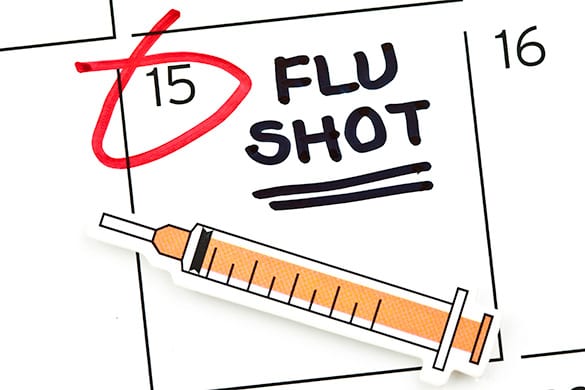Along with falling leaves, colder weather and comfy sweaters, autumn also brings the flu, and while the U.S. Centers for Disease Control and Prevention said last year’s season was one of the worst on record, only time will tell how serious this season will be.
Despite the prevalence of the influenza virus and availability of vaccines, the virus still remains deadly on an annual basis. The CDC reported an estimated 80,000 people in the U.S. died from health complications related to influenza during the 2017-18 season, the highest fatality rate compared to any contemporary season on record since first published in 1976.
Of those deaths 183 were children, the most since 171 died in the 2012-13. Approximately 80 percent of those children who died did not receive a flu vaccination, according to the CDC.
The 2017-18 flu season yielded 30,453 influenza-related hospitalizations from October 2017 through April 2018. People 65 years or older accounted for the majority of those hospitalizations, according to the CDC. Overall hospitalization rates were also the highest on record.
Influenza viruses are hard to pin down, as they come in several forms which can require different vaccinations. The influenza A virus was the preeminent strand throughout the 2017-18 season, though influenza B viruses showed up in different parts of the season.
The CDC report for 2017-18 said the flu shot was only 25 percent effective against the H3N2 virus and 65 percent against H1N1, both type A viruses. Meanwhile it was 49 percent effective against B viruses. The report estimated the overall vaccine effectiveness at 40 percent, meaning it reduced a person’s overall risk of having to seek medical care for flu illness at that rate.
The CDC still strongly recommends vaccines as the best way to prevent contracting the virus, but especially for children at least 6 months old, and people aged 50 and older. Children aged 6 months through 8 years who require two doses should receive the first vaccination as soon as possible, and their next dose four weeks later, according to the CDC. For those looking to travel this season the CDC recommends a vaccination two or more weeks before departure.
The new vaccines being rolled out for the 2018-19 flu season will contain agents to specifically target the A(H1N1) and A(H3N2) viruses along with the usual B viruses.
The CDC recommends everyone 6 months or older gets a shot before the end of October. Flu shots are available at most primary care physicians, but also in CVS Pharmacy, Rite Aid and Walgreens stores free with most insurance plans. The shot is also available in pharmacies in local Stop & Shop, Walmart, Target and Kmart stores. Many colleges, such as Stony Brook University, are offering flu shots to its students. Call your doctor or local pharmacy to ask whether they currently supply flu shots.







